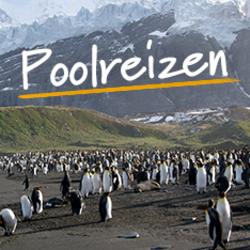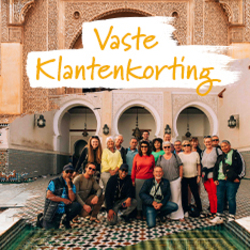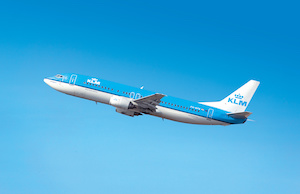Op reis in het najaar
BekijkActivities
- Wildlife Holidays
- Birdwatching
- Visit multiple wildlife habitats in one week: verdant rainforest, lush mangroves, lava fields and serene cloud forests. Abundant wildlife viewing with sightings of monkeys, birds and sloths expected. Discover the tranquil waterways of Tortuguero, an important nesting site for Green turtles. Comfortable eco-friendly lodges and hotels throughout Two boat trips included at Tortuguero and a boat safari in the Cano Negro Wildlife Refuge
Food
-
1
Start San Jose.
The group flight usually arrives into San Jose this evening. Land Only clients should aim to arrive at the hotel this afternoon/evening. Free transfers are available for all clients. This evening is the perfect opportunity to meet your guide and get to know your fellow travellers. Accommodation: Park Inn hotel (or similar)
-
2
To Tortuguero N.P.
Our adventure begins early this morning, leaving San Jose behind as we travel to the north-east of Costa Rica to Tortuguero National Park. Accessible only by boat or light aircraft, Tortuguero's vast network of waterways, canals and swamps is remarkably tranquil, unspoilt and devoid of noise pollution. On reaching the pier we board a small motorboat for the one hour fifteen minute journey to our lodge, which is nestled in the heart of the main lagoon. Our afternoon is spent in Tortuguero village, where it’s possible to visit the Sea Turtle Museum (a donation will be requested at the entrance). Tortuguero is probably most famous as a nesting site for the endangered Green turtle, which can be seen arriving onto the beach to lay eggs from late July to October (as part of an optional excursion). Hawksbill, Loggerhead and Giant Leatherback turtles also nest in this region, and during November to January baby turtles start to hatch and make their way towards the ocean. Today's travel time will be in the region of five to six hours including a break for breakfast. Accommodation: Pachira Lodge (or similar)
-
3
Boat tour around Tortuguero waterways.
An early morning boat trip enables us to discover the extraordinary flora and fauna of Tortuguero, passing serenely along the waterways. At this time of day wildlife is usually at its most active and with the help of our expert guide we are likely to encounter monkeys, caiman, iguanas, butterflies and many of the 300+ bird species recorded here. We return to the lodge for a hearty breakfast by the river. This afternoon we return to the waterways for a second boat trip along a different canal. Alternatively, the lodge is a tranquil spot to relax this afternoon if you want to take some time out to enjoy the facilities or follow a short walking trail through the forest. Accommodation: Pachira Lodge (or similar)
-
4
To La Fortuna, near Arenal.
Leave Tortuguero the same way we arrived by taking a small boat to the pier. Our bus will be at the pier waiting to drive us to the region of Arenal, passing huge banana, pineapple and sugar cane plantations on the way. Arenal was Costa Rica's most active volcano until fairly recently, when it entered a resting phase and can no longer be seen spitting ash, smoke or lava. However there is still a lot of geothermal activity in the area and you'll have the opportunity to visit one of the excellent hot springs this evening. Alternatively have a go on the Sky Tram / Sky Trek, departing at 3pm. In clear weather there are great views of the volcano from our overnight base, the nearby town of La Fortuna. Today's travelling time is around five and a half hours including a lunch stop. Accommodation: Eco Arenal, Arenal Montechiari or Arenal Paraiso (or similar)
-
5
Boat tour of Cano Negro Wildlife Refuge.
Caño Negro Wildlife Refuge and the Frío River combine to create a humid area that is very biodiverse and harbours a great variety of resident and migratory birds, three different species of monkey, iguanas, sloths, turtles and caimans. We transfer approximately 1.5 hours to the village of Los Chiles, found close to the Nicaraguan border. From here we board a boat for our river adventure, which lasts around 2.5 hours and passes through tropical rainforest and pastures until we arrive at the marshlands. The Olivaceous cormorant makes its nests in the area and Wood storks and jabiru (the largest bird in Central America and much endangered) can also be seen. Along the river we may also see Howler monkeys, Three-toed sloths, caimans, lizards, and turtles. Accommodation: Eco Arenal, Arenal Montechiari or Arenal Paraiso (or similar)
-
6
To Monteverde in the Tilaran Mountains; nocturnal wildlife walk.
From Arenal we travel to the Tilaran Mountain Range in the Central Highlands for our first taste of a Costa Rican cloud forest. The journey provides breathtaking views of the Gulf of Nicoya and the islands below as we ascend the hills towards Monteverde, a forest-cloaked region whose name literally means 'Green Mountain'. The high altitude supports a complex eco-system where plants thrive, particularly orchids of which there are some 400+ different varieties here. Today's drive is around four hours- the last 40km of road is gravel and can be bumpy, particularly following heavy rain. In the afternoon it's possible to join an optional coffee tour to learn about the importance of this crop to the socio-economic development of the country. This evening we set off on a night walk in Monteverde Wildlife Refuge. Situated within primary cloud forest, this reserve is committed to the preservation of native flora and fauna. Taking a nocturnal walk allows for a completely new perspective on the forest, which our guides will bring to life for us! Accommodation: MTV Country Lodge (or similar)
-
7
Visit Monteverde Cloud Forest Reserve; to San Jose.
Monteverde Cloud Forest Reserve is a favourite destination for birdwatchers and wildlife enthusiasts. A walk through the reserve will reveal huge old growth trees covered in moss whilst the surrounding mist permeates the atmosphere. The reserve’s geographic, topographic and climatic conditions have allowed for a surprising biodiversity to thrive. There are four ecological “Life Zones” that harbour different ecosystems for hundreds of species - mammals, birds, butterflies, amphibians, reptiles, insects and arachnids. We can also find a variety of mosses, vines, other plants and trees typical of the cloud forest. One of the trails of the reserve leads to a lookout point right at the top of the continental divide where, on clear days, you can be privy to the breathtaking view of both of Costa Rica’s coasts: the Caribbean and the Pacific. These forests are also one of the few remaining habitats of the endangered Resplendant Quetzal. Following today's activity we transfer to San Jose. Accommodation: Park Inn Hotel (or similar)
-
8
End San Jose.
The trip comes to an end today after breakfast, and it's time to bid Costa Rica and the rest of the group goodbye. Free transfers to San Jose airport are available to all clients today.
































